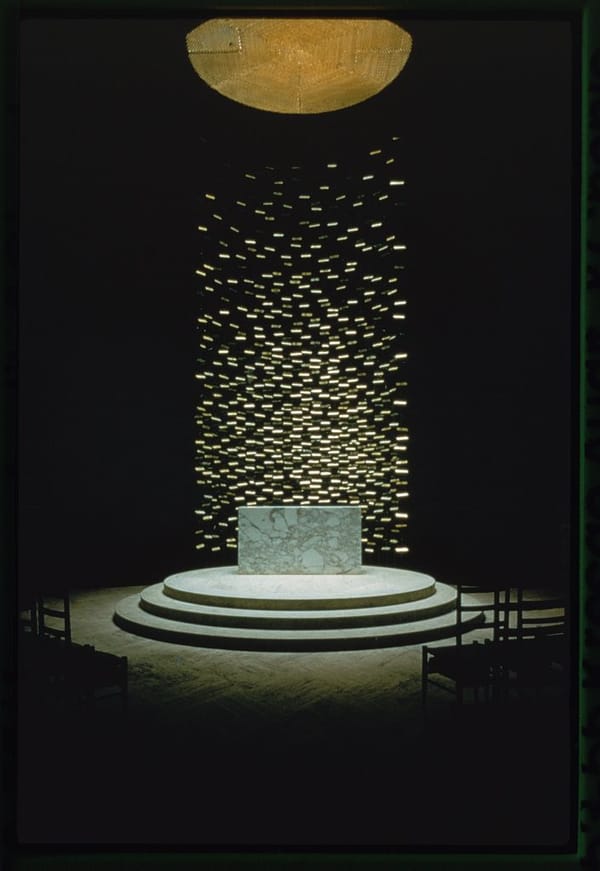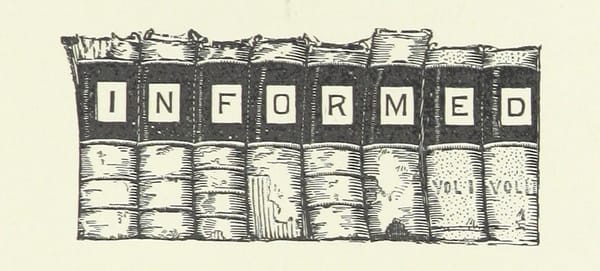Thoughts on College Rankings (Pt. 2 - When Christians Rank Colleges)
In this post I summarize part 1 of the series and apply the posts lessons to a college guide focused on Christian colleges.

Summary (save some water and carbon output and use this instead of a Large Language Model)
In this post I summarize part 1 of the series and apply the post's lessons to a guide focused on Christian colleges. I find that the guide emphasizes institutional commitments to theological stances and Protestant cultural practices as more important than more “traditional” college rankings indicators like academic prestige, price, or economic outcomes for alumni. I’m left wanting to dig deeper into the guide’s emphasis on conservative Protestantism over other streams of U.S. Christian life.
Series Intro
This is part 2 of a series of posts on rankings and Christian colleges. In part 1 I framed some of my big picture thoughts on rankings as a phenomenon of postsecondary education. In part 2 I’m going to apply some of that thinking to a recently released Christian college guide. Based on some thoughts shared here, I think I might extend this series 1 or 2 more posts.
Rankings Pt. 1 Refresh
As a quick refresher from part 1 of this series, rankings publications are, in part, a market response to a demand for reducing the complexity involved in decisions about college enrollment, AND rankings regimes reveal (and possibly help shape) submerged assumptions about the utility and purposes of higher education. Rankings are lucrative and bestow social capital/leverage on those organizations that can successfully get their publication to a position of prominence. However, for colleges and universities themselves, they mostly reinforce a preexisting hierarchy of institutions based on their economic resources, prestige, and social power positioning. Rankings are great if your college or university happened to already be on top of the rankings’ hierarchy, but are generally more trouble than they are worth if you’re not near the top of that hierarchy. Once a ranking gains a certain amount of momentum, your university may be incentivized to perpetuate its perceived utility (or try to burn it down if the rankings implicit interests are no longer aligned with yours).[1]
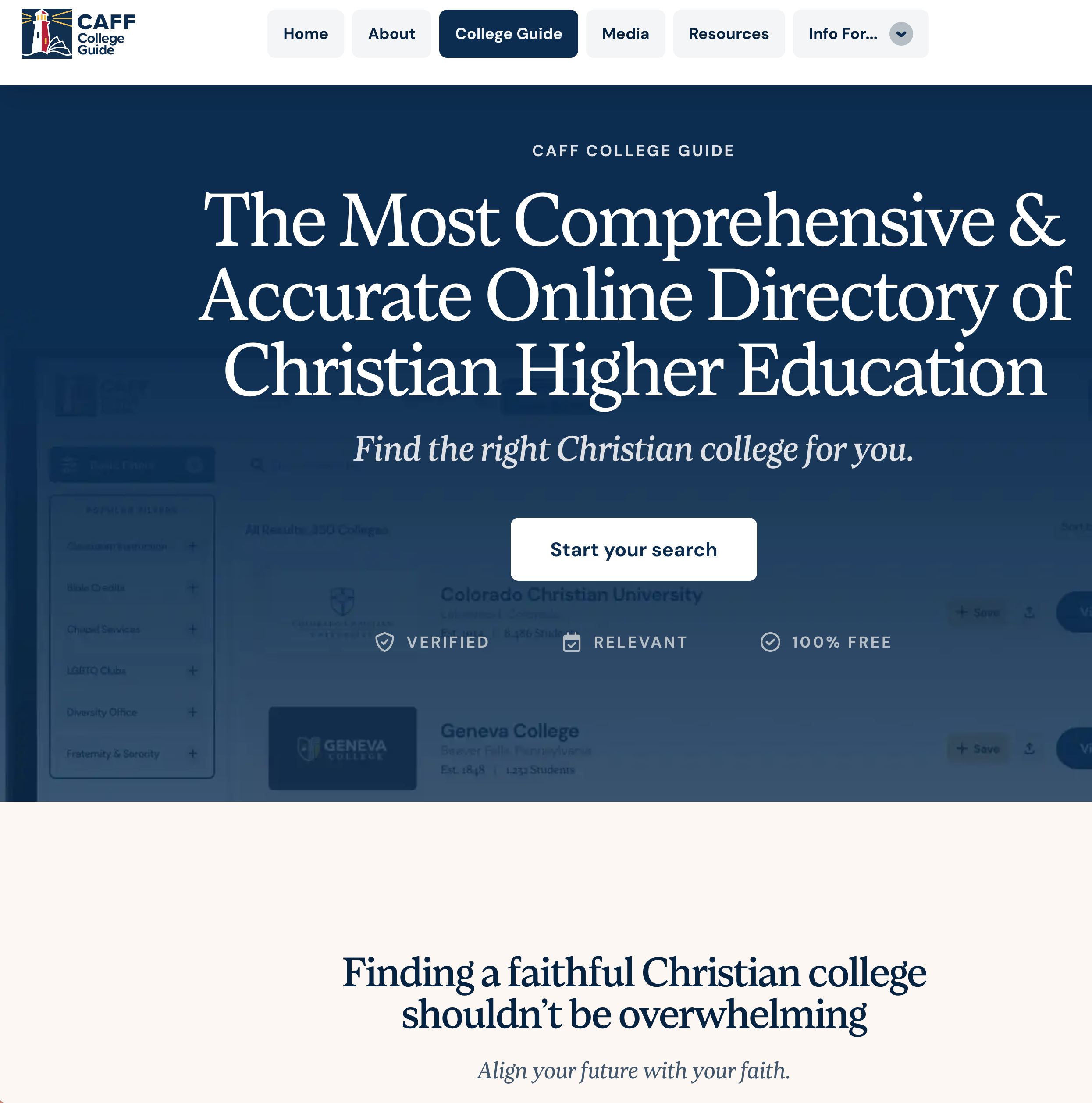
^A screenshot of the landing page for CAFF's Christian College Guide.
The CAFF College Guide
CAFF stands for the Center for Academic Faithfulness and Flourishing. In good Protestant fashion, the organization describes its goals following the homiletic rule of 3 alliterations. CAFF exists to reassert, redesign, and reinvigorate Christian higher education. An important concept (which I’ll discuss in a bit more detail later) is faithfulness–more formally “institutional faithfulness.” CAFF has published a college guide designed as a “one-stop shop for understanding how authentically Christian colleges and universities in America differ across various dimensions…[and] raise awareness about the college options available to students seeking a Christian education…” What might the CAFF guide reveal about their submerged beliefs for what constitutions Christian higher education? I perused their guide to draw some preliminary conclusions.
An important first observation from their FAQ is that this guide does not rank institutions by any hierarchy. Their goal is simply to provide transparent and comprehensive information and its up to you-oh prospective student- to make the important decision. The information for the guide was sourced through a combination of independent data collection, institutional collaboration and IPEDS[2]. Many of the indicators are standards of the rankings genre like a basic institutional profile, costs, student outcomes, extracurriculars and curricular offerings. What makes this resource unique is its inclusion of a section on “Institutional Commitments” for each institution in their database (see just below this paragraph for a screenshot of commitments listed in an institution's profile). While the guide does not give an explicit definition of what constitutes a “faithful” or “authentic” Christian college (both those terms show up a couple times across the website), these commitments are meant to signal those markers. The dashboard’s construction itself gives some glimpses at what CAFF believes users want or need to see to make an informed decision.
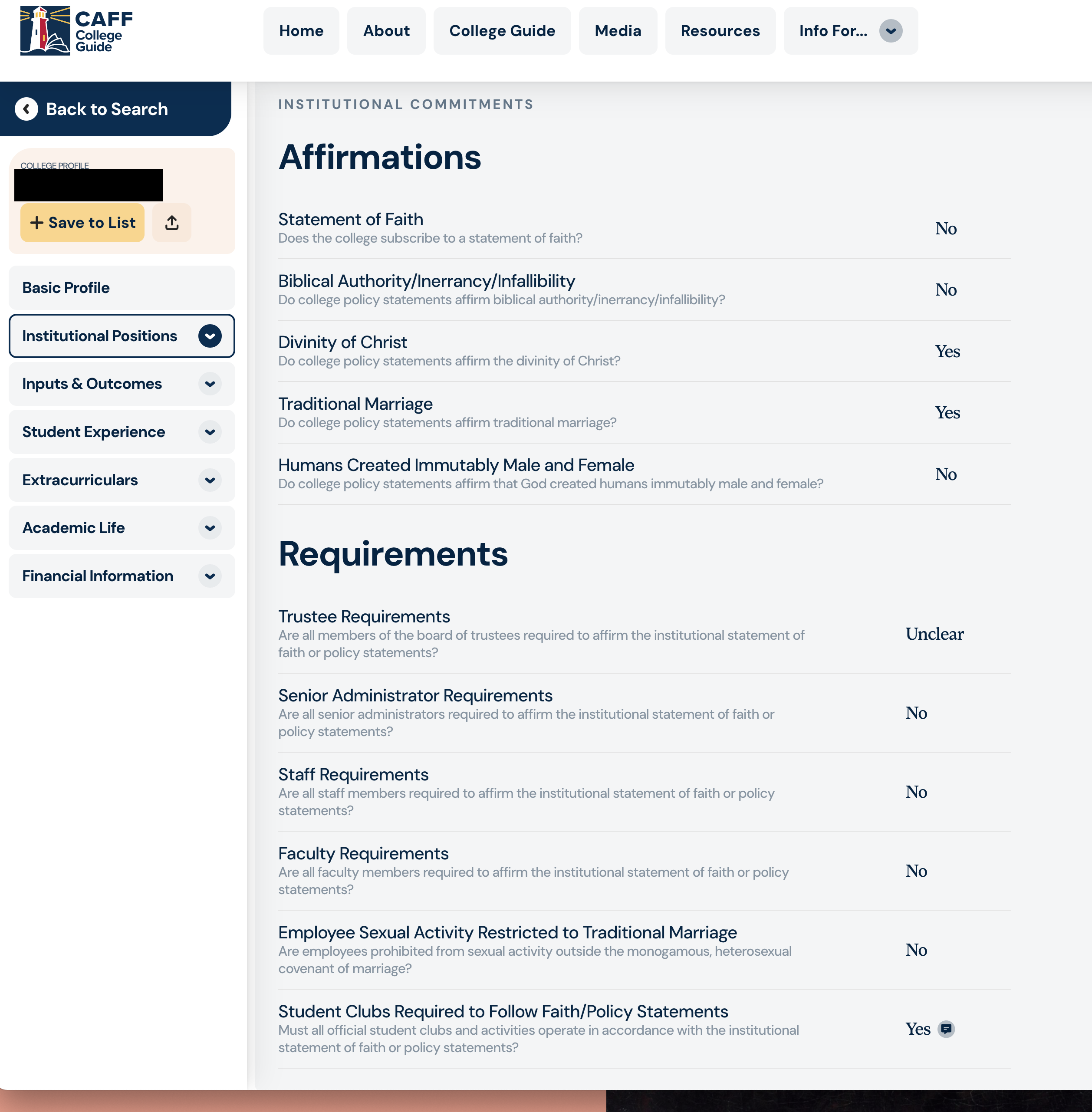
^A screenshot of the institutional commitments section of an institution's profile
The guide dashboard includes basic, popular, and standard filters (see screenshot below this paragraph for an example of all the filters provided). The basic filters include data points you would typically find on other ranking dashboards, but the popular filters feature a couple unique elements. They include
- classroom instruction (must it follow the institution statement of faith)
- bible credits (total required credits for graduation)
- chapel services (how many are required each week)
- LGBTQ Student club (is official recognition given to student orgs on this issue)
- Diversity Office (does the institution have a diversity office or multicultural center)
- Fraternity & Sorority (does the college allow fraternity or sororities)
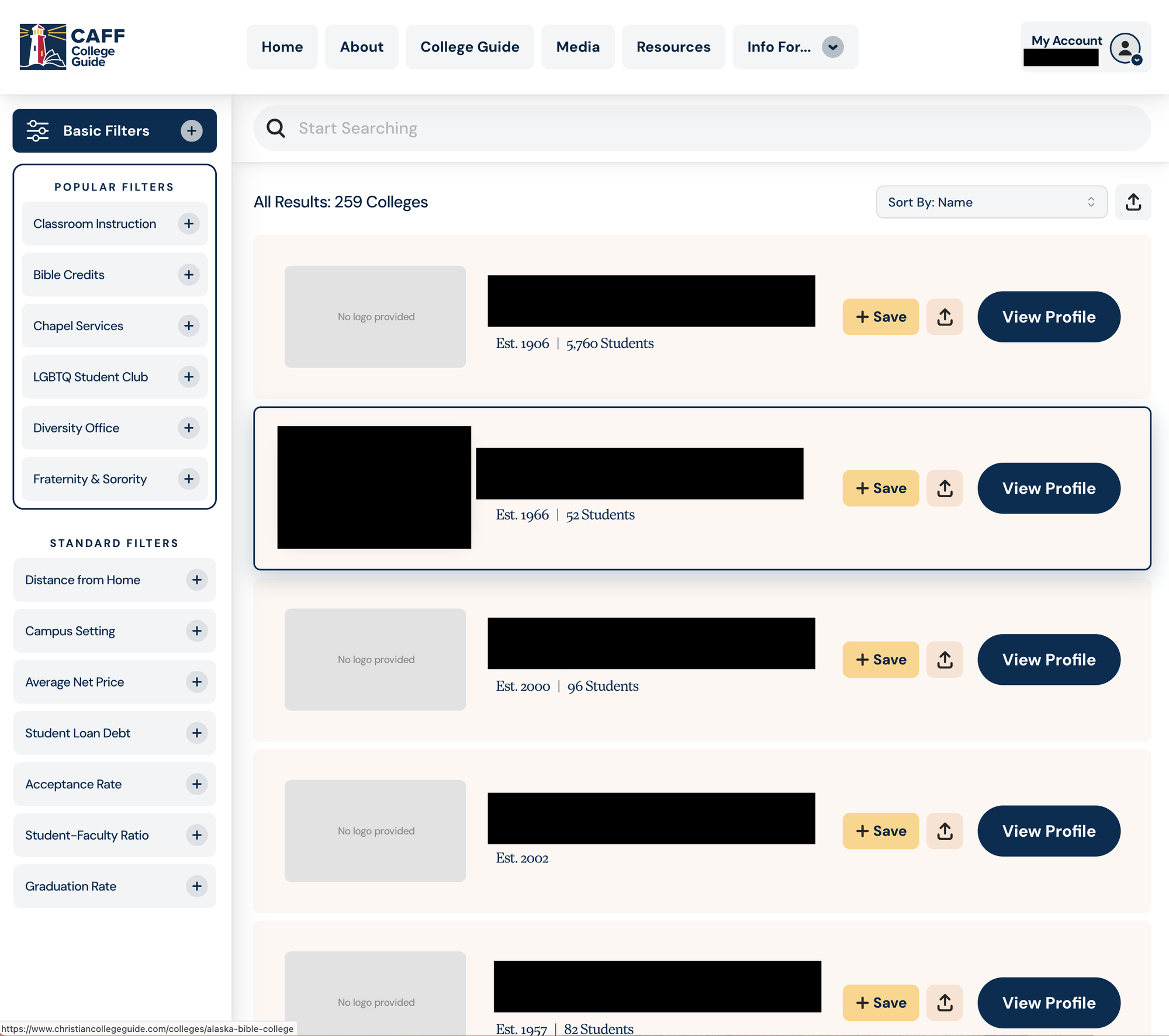
^A screenshot of the dashboard landing page
I don’t have access to how the dashboard has changed over time, so I don’t know if these are popular filters as in “we think those who would use this dashboard will demand these filters” or “over time, our users gravitated to using these filters frequently.” In either case, it signals that institutional price, prestige, outcomes, or post-graduation indicators like job placement are less important than cultural practices like chapel, student socialization, and stringency of alignment with institutional theological assertions. Taken with a couple other observations about filters, I can start to piece together some assumptions about intended and unintended values informing this guide.
I’ll commend the fact that the individual profiles are very dense when it comes to institutional information. The guide stays true to the assertion that it is not designed to rank and therefore push you to a particular hierarchy of institutional distinction. I presume that this guide was created for an audience CAFF presumes to be very particular in what they are looking for when making enrollment decisions. However that audience particularity is not directed toward what I would label “traditional” rankings markers like academic prestige, cost, or economic outcomes of successful matriculation.
Conclusion
What does it mean to be a “faithful” or “authentic” Christian college? Based off the dashboard design it doesn’t necessarily require a liberal arts focus.[3] You can find curricular information deeper in the weeds, but the dashboard is designed to let you filter by different majors, not overall curricular thrust. At least in the current iteration of the guide, faithful and authentic is reserved for Protestant institutions. There are no Catholic institutions - it’s not even a filter option (within the Basic filter “theological tradition”). There could be good reasons for this, the FAQ states that institutions were chosen based off their membership in one of three organizations that represent Christian colleges and universities (CCCU, ABHE, IACE). There may be logistical considerations that necessitated a Protestant focus. However, I think this guide takes a very narrow stance on what counts as Christian higher education. It can be inferred from this guide that “faithful” and “authentic” require specific organizational practices and curricular commitments. I think some of those assumptions about what counts as in or out are ideologically and culturally driven–it’s not just an “objective” choice based off assertions from the historic foundational Christian creeds (Apostle’s and Nicene). I think I’m going to interrogate the deeper ideology and potential cultural markers that informed this guide a bit more in future posts. Next week I plan to highlight some responses to this guide that I’ve seen in the blogs I follow.
For a great example of some institutions that took the turn from embracing to resisting see the Ivy League Law Schools, or for a more juicy/gossipy example see this statement from Vanderbilt after they dropped in their rankings. ↩︎
Not to get too political here for a moment, but if a consequence of the incoming administration’s policy goals for the Department of Education include gutting the National Center for Education Statistics, I would consider it one of the absolute dumbest outcomes of education related policy priorities associated with deinstitutionalization. ↩︎
The liberal arts are historically contextualized as a product of medieval higher education curriculum. ↩︎

